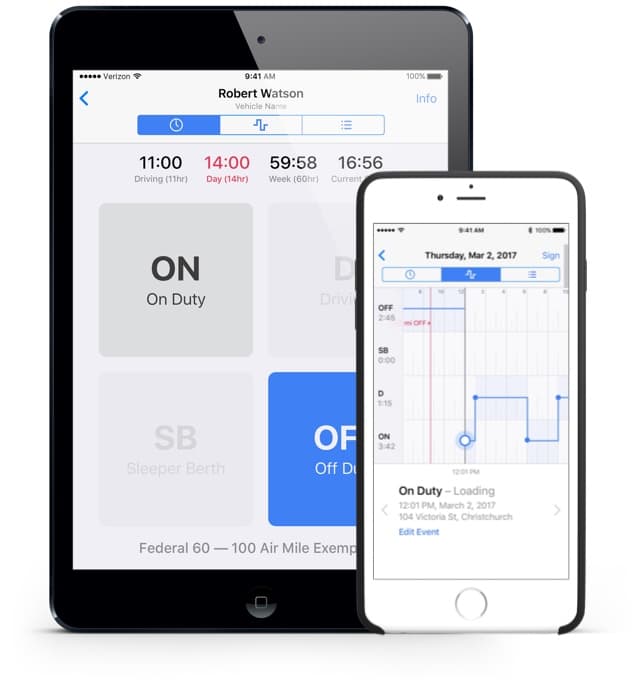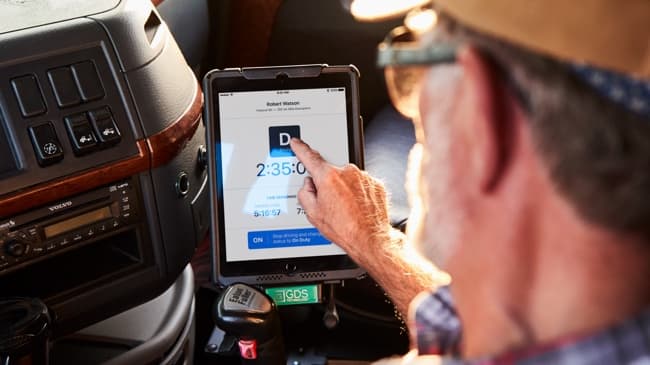Hours of Service regulations
The HOS regulations are detailed on the FMCSA website and need to be followed by drivers of commercial vehicles throughout North America. According to the FMCSA, these regulations are designed to help keep drowsy truck drivers off the road. The FMCSA states that regulations are needed because, according to laboratory tests, most drivers are not good at estimating their own level of tiredness.
Here are some key areas of the HOS regulations:

Hours of Service – 70 hour rule
The 60/70-hour limit stipulates that a driver should not drive after 60/70 hours on duty in 7/8 consecutive days. A driver may restart a 7/8 day period after taking 34 or more consecutive hours off duty (the 34-hour restart option is only available to drivers moving property, not passengers).
To clarify, the 70-hour/8-day rule is only available to commercial fleets that operate every day of the week. Otherwise drivers need to use the 60-hour/7-day rule (driving limited to 60 hours in any 7-day period).
For commercial vehicles carrying passengers there is also the need for a sleeper berth. Drivers using a sleeper berth must take at least eight hours in the sleeper berth, and may split the sleeper berth time into two periods provided neither is less than 2 hours.
HOS – 30-minute break rule
Every eight hours (or less) drivers are required to have a mandatory rest break of at least 30 minutes. This doesn’t apply to drivers using the short-haul exception.
Hours of Service – restart
The restart rule (or 34-hour restart rule) states that the seven (or eight, if the driver is using that option) day period can be reset to zero after at least 34 hours off duty.
Some recent interim rules no longer apply. One of these rules required that the off-duty period stretch from at least 1 AM to 5 AM the following day, and only being able to use the restart no more than once every seven days.
You can read more about new HOS exceptions here.
HOS – 100-mile radius
Some commercial drivers are exempt from keeping HOS logs. The short-haul exemption is for drivers who don’t drive outside a 100 air-mile radius (from their normal work-reporting location e.g. depot).
Verizon Connect compliance software can be setup to record driving hours in the background for drivers whose situation changes from being exempt to requiring HOS reporting.
Read more about HOS rules and common violations here.

Hours of Service app
An Hours of Service app can make it easier for drivers to record and review their driving hours, including seeing how much time they have remaining before they need to take a break.
With the introduction of the ELD mandate in December 2017, all commercial drivers are now required to record their driving hours using an app (see our ELD section for more information).
A HOS app can run on most modern smartphones or tablets (Apple or Android) and will read vehicle data from hardware connected to the engine, updating the driver’s status automatically.
HOS apps can help reduce or eliminate the Form & Manner and driving time violations that were common with paper HOS logs. And because the app software is updated automatically to maintain compliance with any new rules, it’s easier for drivers to stay up-to-date on any ELD mandate changes.
With all driving data being collected electronically, it is also easier for management and dispatch to report on HOS limits and assign new driving jobs more efficiently.
Get a free demo
Within 15 minutes we will show you how our platform can best fit your business objectives.




